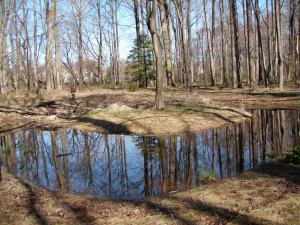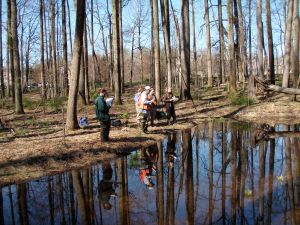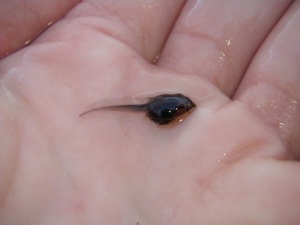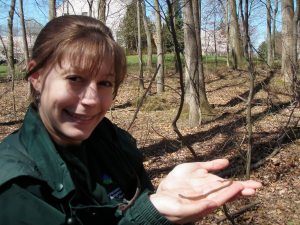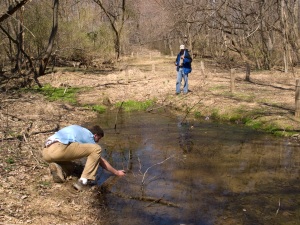The Stream Valley Drive subwatershed lies within the Rock Creek Watershed. In the Stream Valley Drive tributary, historic agricultural practices, a power line crossing, and road crossings had increased stormwater flow damage in the stream such as bank erosion, and increased sediment problems. It had also incised the stream’s channel-bottom, and degraded instream habitat for fish and other creatures.
Today we went back to the Stream Valley Drive stream to evaluate how successful its 2004 restoration project has been in bringing back biological life. In 2004, DEP completed restoration on 2,380 feet of the stream at a cost of approximately $250,000. The restoration project’s goals were to:
- Protect stream quality of an important headwater tributary to Rock Creek
Stabilize eroding stream banks
Enhance a riparian buffer
Improve fish passage
Enhance floodplain access
Establish vernal pools
Improve instream aquatic habitat conditions and
Restablish a stable historical channel
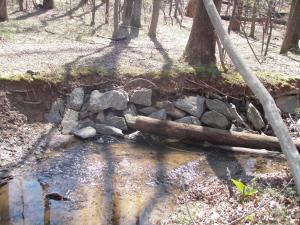
The large boulders (rip rap) are used to stabilize the bank and prevent additional erosion.
Cross Vanes (lines of stone or logs which are carefully laid down at an angle) were incorporated into the restoration sections, to help turn the flow of water toward the center of the stream. These vanes channel fast-flowing water away from the banks which prevents erosion and maintains stream bed elevation.

Meghan looking at a log cross vane, it helps to direct flow away from banks and towards pools. These pools are critical fish habitat.
A good part of our post-restoration monitoring focused on the stream station. While assessing habitat, we saw some evidence that the stream restoration was working well – the stream appeared to have more natural bends and flow and the banks appeared stable in areas were rip rap was placed.
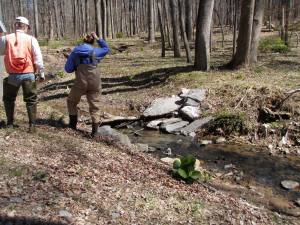
Biologists examining whether the rock cross vane functions adequately.
Just as we did at the created wetland, we looked at the biological indicators to tell us the full story on the success of the restoration project. We observed some benthic macroinvertebrates (aquatic insects, worms, crustaceans, and mollusks) as well as salamander reproduction which were particularly encouraging. We observed both larval northern two-lined salamanders and northern two-lined salamander egg masses when we collected our benthic macroinvertebrate sample.
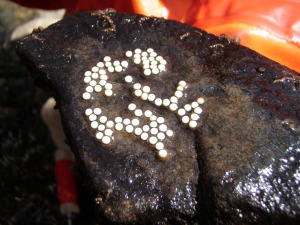
Stream salamander eggs attached to the bottom of a rock that was sampled during benthic macroinvertebrate collection. The presence of eggs and larvae tell us that the water quality is good enough to allow for successful reproduction in this restored stream.
The benthic macroinvertebrate sample will be processed back at the lab and compared to the pre-restoration sample and other post-restoration samples to examine how the community has changed over the life of the restoration project.
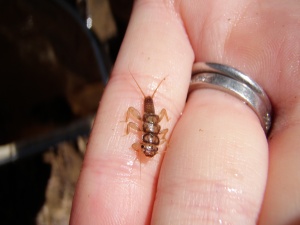
Stonefly larvae in the family Perlidae. Stoneflies are one of the most pollution-sensitive benthic macroinvertebrate groups. This stonefly's presence indicates that the water quality is good.
Overall, we had another great day out in the field, seeing indications of some level of success at this restoration site, collaborating with colleagues, and enjoying the sights and sounds of springtime.

Spring Beauty: One of the wildflowers we encountered at the restoration site.
SHARE THIS STORY ON SOCIAL MEDIA:















